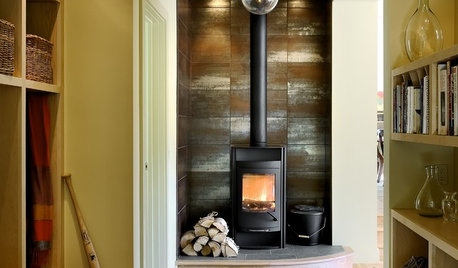adding to compost for heat?
alicev
14 years ago
Related Stories

GARDENING GUIDESGet on a Composting Kick (Hello, Free Fertilizer!)
Quit shelling out for pricey substitutes that aren’t even as good. Here’s how to give your soil the best while lightening your trash load
Full Story
GARDENING GUIDES10 Cold- and Heat-Tolerant Perennials and Shrubs for the Arid West
These flowering native plants shrug off the cold of winter and heat of summer while adding beauty to the drought-tolerant landscape
Full Story
MOST POPULARWhat to Know About Adding a Deck
Want to increase your living space outside? Learn the requirements, costs and other considerations for building a deck
Full Story
GREEN BUILDINGInsulation Basics: Heat, R-Value and the Building Envelope
Learn how heat moves through a home and the materials that can stop it, to make sure your insulation is as effective as you think
Full Story
GREAT HOME PROJECTSHow to Add a Radiant Heat System
Enjoy comfy, consistent temperatures and maybe even energy savings with hydronic heating and cooling
Full Story
FIREPLACESHeat Your Space in Style with Today's Wood-Burning Stoves
Cleaner burning and streamlined, new wood-burning stoves warm up the room
Full Story
HOUSEKEEPINGLower Your Heating Bills With Some Simple Weather Stripping
Plug the holes in your house this winter to make sure cold air stays where it belongs: outside
Full Story
FLOORSWhat to Ask When Considering Heated Floors
These questions can help you decide if radiant floor heating is right for you — and what your options are
Full Story
BATHROOM DESIGNWarm Up Your Bathroom With Heated Floors
If your bathroom floor is leaving you cold, try warming up to an electric heating system
Full Story
FLOORSFloors Warm Up to Radiant Heat
Toasty toes and money saved are just two benefits of radiant heat under your concrete, wood or tile floors
Full StoryMore Discussions


gjcore
idaho_gardener
Related Professionals
East Rancho Dominguez Landscape Architects & Landscape Designers · Eden Prairie Landscape Architects & Landscape Designers · Burlington Landscape Contractors · Hartford Landscape Contractors · Aberdeen Landscape Contractors · Boca Raton Landscape Contractors · Kailua Landscape Contractors · Mashpee Landscape Contractors · Mason Landscape Contractors · Milton Landscape Contractors · Oxnard Landscape Contractors · South Lyon Landscape Contractors · Uxbridge Landscape Contractors · Glen Ellyn Decks, Patios & Outdoor Enclosures · Wilmington Decks, Patios & Outdoor Enclosuresluckygal
laurell
beth_monsterworms
Lloyd
Kimmsr
buffalowormsfarmer
avid_hiker
Lloyd
avid_hiker
Kimmsr
Lloyd
joe.jr317
Lloyd